Daron Shade is a Tucson, Arizona photographer. We have a great interview here and a few of Daron’s photographs to enjoy.
But first an update on some changes here at Lighting Essentials. For quite a while I have been working to find my voice and deliver the kind of information that is necessary and needed in the field. The workshops have helped me find what people are looking for and make some changes in direction.
There are a lot of beginner sites out there. From just starting out to having fun with lots of lights to learning how to compose better images. There are some really good ones, and there is no need for another one. There are also sites devoted to the high-end photographers… with discussions of $200,000 budgets and how to pack to take 4 assistants and gear to Nepal to make photos for some big time ad agency. Very cool. Fun to read.
But there aren’t very many sites for the emerging photographer. The photographer who has been working at it for a while and is beginning to, or has already started to become a semi-pro or professional. Photographers who work in smaller towns than New York or San Francisco may find discussions on $250,000 budgets for a week of work a little otherworldly. From models to make-up artists to support personnel to art directors, there can be quite a different set of realities when working in smaller markets.
That is where Lighting Essentials is going to try to fit itself in. We want to work with the photographers who are serious about it, but may not be currently working in NY or SF or Miami. There are a hell of a lot of photographers out there in smaller markets. And although it is fun to read about a photographer who travels the world shooting celebrities, or hunkering down in a huge, beautiful studio to make shots of the top models in NY, most photographers will not get to experience that. Not right away, at least.
They have to go from where they are to where they can be. I believe that we limit ourselves more than we are limited by external influences. Hard work, strong vision, diligence and more hard work can go much farther than most people think it can. With the knowledge that can be gained from mentors, competitors, books, websites and more, a photographer from Akron or Boise or any other city can achieve more than they think they can… even without moving to NY.
Lighting Essentials will begin to focus more on providing solid information for the emerging photographer. Of course the site will welcome any and all, but I hope that this little format change can help Lighting Essentials deliver content that is a little different, and more relevant to this important set of photographers.
Let me know what you think as we go along. Please.
Previous Interviews:
Tom Miles – London
Chris Bohnhoff – Minneapolis
Claire Curran Corbett – Texas
Eduardo Frances – San Salvador
Kirk Tuck – Austin
Now, on to Tucson Photographer Daron Shade and his Lighting Essentials Interview.
1. How long have you been in business? Was it a slow transition or did you just open shop?
I first worked as a full time professional photographer in the early 1990’s, but only lasted a few years before I had to supplement that income. I have to say that it’s been a slow transition but I’ve been full time again for about 5 solid years now, supplementing with web design as necessary.
2. How did you get started? Any mentors or great stories here?
I got my start back in 1990 shooting non-traditional sports when I was sidelined due to injuries. I had some images published in magazines but mostly sold prints to participants in racing and paintball. That fall, I went to college and shot for the school’s alternative newspaper. This is about the same time I picked up the Ansel Adams books “the cameraâ€,†the negativeâ€, and “the print.†I think this is when the technical side of photography started to come into focus for me. We shot exclusively tri-x at the paper and often went to print 15 minutes after a news event. Since we were the new alt paper, we were in a constant race to provide better content quicker than the official school rag. I learned how to work under tight deadlines, pull processing to save time and often printing terribly thin and still wet negatives.
From there, I moved on to working in various darkrooms including one for a news agency that was tied to Christian Missionaries. I would receive film each day from all over the 3rd world and process according to the notes scribbled on the canister. Contact sheets to the editor, print the choices, and off they went to the AP and other news agencies.
Later, I started working as an assistant. My first exposure to the commercial photography world was with a great photographer in my home town, Scott Canouse. I didn’t work with Scott very long before leaving for New York City, but in that short time I learned a whole lot about controlling light and creating commercial images. In hindsight, he’s the mentor that I should have spent a few years with.
From there, I moved to New York for a couple more years and shot when I could and assisted when I had to. I worked with a number of photographers, some famous and some struggling just like I was.
3. Describe an average week at your studio.
A week at my studio is pretty chaotic. I try to organize my schedule around my clients and their needs. In addition to my necessary client relations and shooting, I spend time planning and shooting my portfolio and working on my marketing plan. I make an effort each week to keep in touch with clients that I don’t have a current project with, potential clients, and other business contacts. This includes modern media marketing as well as old fashioned phone calls and mailings. I’m also very active with SEO and watch my rankings and visitor trending every day and map responses to any marketing efforts.
4. Why Tucson? Have you considered anywhere else?
That’s an interesting question. I landed in Tucson for personal reasons and it actually put the brakes on my career. I had been shooting stock landscapes in the northeast full-time for a couple of years before I came to Tucson. I couldn’t find any work and ran out of savings so I had to get a ‘real’ job. That detoured my career for over five years but I was determined to come back.
Though I like Tucson, I have considered a number of other cities. In fact, had been working in Palm Beach quite a bit and almost moved there just before the bottom fell out of the market in 2008. I also have a number of clients in Atlanta and think that it’s a great town. That said, don’t be surprised if you find me on the Skagit river in Washington shooting bald eagles and the North Cascades year round someday.
5. What motivates you, or gets you going? What do you use for inspiration?
Creating images is a compulsion for me. I tried making a living elsewhere, but have been drawn back to photography in a way that I can’t explain. My work has become an extension of my imagination and has incorporated itself into the way I think and view the world around me.
I have a notebook with filled with image idea sketches, and I draw from that for both personal and professional assignments. This book also has lists of locations , time of year , time of day and weather conditions I predict would make a remarkable image. I’ve also learned to rely heavily on Google Earth to plan my landscape photography. In fact, I’m going to include a photo for your readers that was visualized and planned using Google Earth. Without that 3d mapping tool, I would have had much more difficulty finding the best location and time of year to capture the depth in this image.
I learned some time ago that to stay creative, I draw inspiration from other mediums of life and art. I watch a lot of older b-flicks at night while I’m working on the computer and dream (literally) of images based on the plot of the movies. Not the cinematography, but the tension and plot. I find that music and movies create a culture of creativity in my mind that is something very different than copying someone else’s work.
6. What is it you like the most about being a photographer? Do you do anything else for a hobby or avocation?
I love the mix of art and science, measurement and judgment, artist and technician. I love having new projects every week and the fact that observing beauty around me is part of my job. To see something differently than anyone else ever has and use light to sculpt and create texture to communicate that vision is very rewarding.
At this point in my life, I’m a full time photographer, husband, and daddy. I still get out on my mountain bike once in a while, but not as much as I would like. Years ago I was quite an adrenaline junky and I think that energy and impact is visible in much of my work.
7. Are there any downsides to being a commercial photographer that you would like to change? How would you change them?
Having been a photographer for a long time, I’ve learned to adapt to the changes in our industry. What could be considered obstacles, I try to see as areas of opportunity. Take the microstock phenomena for example. It has done us the favor of taking mundane images out of our clients’ hit lists. I can’t remember the last time I was paid to take a boring image of “two guys in suits shaking hands†– Cool! More time to shoot creative stuff.
The downside of this is that a lot of the ‘bread and butter’ jobs are off the table and sometimes we have to branch out into ancillary work within the industry to fill in the down time. Many of us become part-time graphic or web designers. I think this has just become a fact of life for many in the industry and I believe that it keeps our creative vision fresh.
8. What was your most memorable assignment?
I’ve had a lot of great experiences shooting over the years. Memorable assignments have come in different forms – I remember the first of each type of shoot or success – my first NASCAR race, my first exotic car shoot, my first large format commercial gig, double trucks and covers… but as I look over my career and see its evolution, I think the one that may have the most lasting effect on my work and my creativity is one that I’m working on currently. I have been hired by my local city government to shoot a landscape series for a book on the natural heritage of the valley in which I’ve lived for 15 years. I have spent 15 years driving through and around this valley, always planning to ‘someday’ make the time to shoot. It’s helping me refocus on the fact that there’s a beauty around us if we just make the time to see it. Coming right at the time that I’m redefining my work and bringing it a new level of vision for myself, it’s really an amazing opportunity to clear my mind and embrace the art of seeing.
Unlike any other landscape work that I have done, this is clearly a commercial assignment with very specific lighting and image requirements. Shooting images to artfully and accurately illustrate a book that’s in final edit is commercial work, plain and simple. I just happen to be shooting mountains.
It’s something that we as photographers know, but when you are given an assignment like this, it really brings the whole point of photography into clarity. You know, that there’s powerful meaning in the everyday world around us and we pass the same objects every day and never see it. There’s an incredible natural light image near us every day at sunrise whether we live in an apartment building or on a ranch, we just have to plan to be in the right place at the right time.
9. Any ‘war’ stories you would like to share? You know, the ones that always start with “There was this one job where….”
I had a low budget aerial photo gig a few years ago. I requested a helicopter but the client “knew someone who knew someone†with a Cessna 152. Afraid to say no and risk losing future business, I agreed and we scheduled the shoot. I was on time to meet the pilot at an international airport but he was about an hour late. On the way to the plan, he realized that he forgot the keys at home!. At this point, I’m somewhat afraid to fly with this guy but also afraid to lose the client, so we reschedule but I insist on flying out of a smaller regional airport closer to my office. The following weekend, we meet and fly out to the location to shoot. Unfortunately, I am limited to shooting out the window and the client wants a straight down POV – so the pilot has to go into a tight spiral and basically stand the plane on its wing. We were directly over the shot, in this tight spiral and the pilot backed down on throttle to stabilize for the shot. Then something happened. I don’t know exactly what happened. It might have been a gust of wind or the pilot had a seizure or just screwed up and backed out of the throttle too much. I don’t know exactly how, but we started falling out of the sky. We’re ¾ upside down, freefalling less than 2000 feet off the ground. The plane started to tumble and after what seemed like an hour of freefall, the pilot pulls us out and asks me if I’m ok. Yeah, I’m fine. Right. We get back in position and finish the shoot. The flight back to the airport is uneventful until we’re on our runway approach. We radio the tower and are cleared for landing. Out of the corner of my eye, I see something coming at us quick. Some moron in a sport plane flies directly under us so close that it shakes our Cessna! My pilot was instantly on the radio screaming and swearing at both the tower and the other plane. Needless to say, when we finally landed I was very much relieved. Nowadays, I bid very high on aerial gigs.
10. What would be your ideal assignment?
Ideal assignment, hmm? I never really dream about a single assignment, but rather want for ideal clients that I would work with on an ongoing basis. I just love partnering with creative ad agencies that want to work ‘outside the box’ and provide our clients with epic images that set them apart. To me, it doesn’t matter as long as I have the creative input to work as part of a great team so we can knock the socks off the client.
11. Future plans for Daron and his photography?
My goals are finally pretty clearly defined. I have a small number of ad agencies that I have been working with consistently . I enjoy these relationships, and would like to expand that number by enlisting a representative to help me bring my business to that next level.
12. Tell us a little about your new work…
This has been an interesting year. In the recent past, I had been totally driven by client requirements. In 2009, I was presented with the opportunity to really reinvent myself and paid close attention to your “portfolio challengeâ€, Don; but I couldn’t figure out what that portfolio challenge should entail for myself and struggled with self-assignments. It sounds crazy coming from someone who’s been shooting for 20 years, but there I was without a clue what type of work I wanted to do and no real idea what set me apart from the sea of other capable photographers out there. By chance meeting, I met portfolio consultant Jain Lemos and happened to have a few prints with me. She saw clear consistencies across a number of very different images, helping me realize and refine my own style. She really set me on the right path to redefining myself.
With that in mind, I have been focusing on creating incredible images- focusing on consistency between subject, style elements, composition, lighting and processing. I have also been hired to do another landscape series for a different client. I would love to see this trend continue.
13 Oh, and what is on the music box right now at your studio?
I’m a Pandoraphile (Pandora.com). I create a ‘station’ based on my mood and let it run. To be honest, my listening preference is totally based on what I’m shooting. I find music affects my mood immensely so I will play something that sets the tone or allow the client to choose.
Visit Daron’s site here or send him a note here:
—————————–
Thanks, Daron.
I hope you all enjoyed Daron’s interview. We will be back this week with a post on gear and some ideas about what to do when things are slow.
BTW: If you liked this post, please let other people know by twitter or any of the other Social Media buttons above on the right.


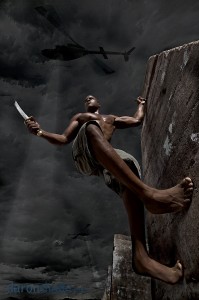
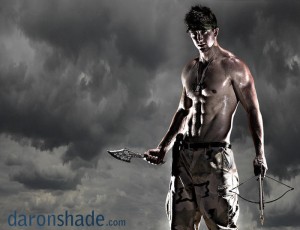
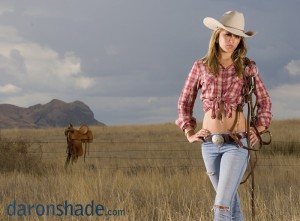

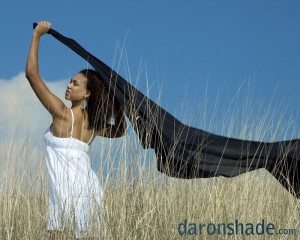

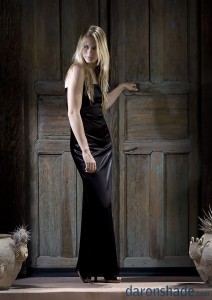





Great interview, and I’m very excited about the direction of the blog, I think it’s a great (and under-represented) niche in the photo-blogo-sphere right now!
It´s great what u do Don! Thank u very much for your work!
Always nice to see a talented Arizona photographer get some recognition. Great interview Don!
Really enjoyed this interview and like the direction you have decided on for this site.
Great interview and excellent news about the direction you are heading with the blog. It sounds like you’ve decided to customize your blog just for me. I’m sure to be spending more time here – Thank you.
As an emerging commercial/advertising shooter in a small West Texas town I know my local market won’t bear the commercial pricing structures I’ve found so far, not without a lot of selling on my part anyway. I just did a multi-day shoot for a local art museum who had been paying one of the most well known photographers in town $100/hr. to deliver a high resolution disk of all of the images they wanted, unlimited usage included. That’s not bad money for a local portrait photographer but it’s hardly the glamor budgets I get a peak at in other markets now and then.
I have yet to encounter a local photographer, much less a local client, who understands the copyright and usage licensing model. I honestly can’t claim any expertise on it myself. The main advantage to this market is that I have a real opportunity to stand out as a specialist in a market saturated with good portrait photographers but no true commercial/advertising shooters. I’m really looking forward to your insights on the smaller markets.
Great interview and I really appreciate your new focus.
Great article Don, Daron Shade is great and I loved learning even more about him. I like your new direction too. I think you are right on and sounds like LE is going to fit my needs perfectly!
I agree totally with your focus. There is definitely the piece missing in the middle. Dreaming of the high end jobs is good to a degree, however it becomes too easy to lose focus on the business at had. The words become “if only I could or if if only I had” rather than “this is what I have, how do I use this to the fullest”. Presenting the realities of business is important as there are a lot of talented photographers who have no business sense. Your comment about hard work and lots more hard work needs to be pushed all the time. There is no such thing as a free lunch. I have found your articles full of common sense and easy to read, keep it up.
Thank you for seeing a niche in the blog market that needed to be filled. I’ve enjoyed following LE for a while now and it looks like it’s going to be even more enjoyable and applicable for me.
I enjoyed the interview. As much about his work – I liked his thoughts on the business in question #7.
I think your new focus and direction for lighting-essentials is also very good too.
Rosh